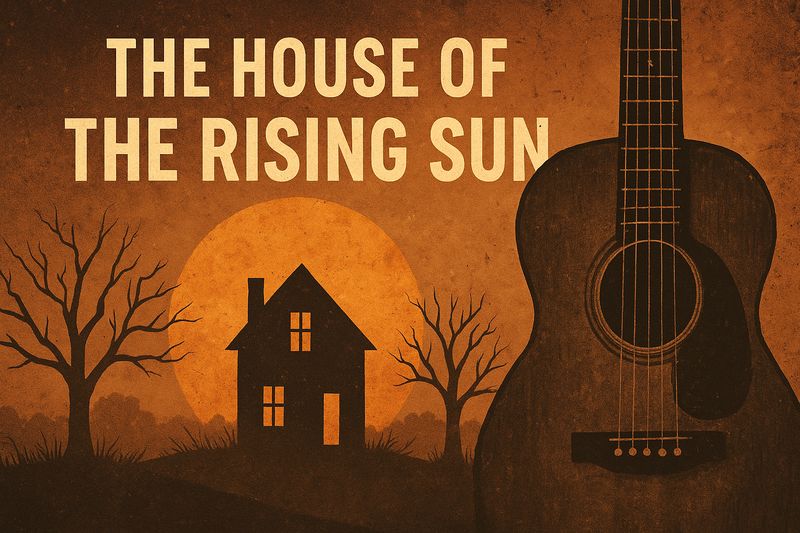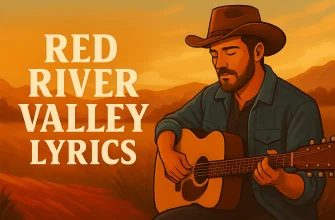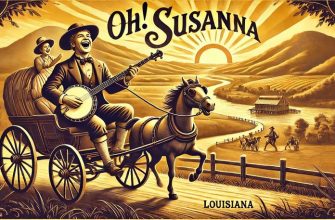“There is a house in New Orleans, they call the Rising Sun…” These iconic opening lines have resonated across generations, evoking a sense of loss, regret, and the seductive allure of a life spiraling out of control. “The House of the Rising Sun” is more than just a song; it’s a cultural touchstone, a haunting ballad that has been reinterpreted and reimagined countless times. But beneath the familiar rock anthem lies a rich and mysterious history, stretching back to the early days of American folk music. As American Bard, I’ve always been drawn to the stories etched within these timeless melodies, and it’s this fascination that compelled me to revisit a less-known, yet incredibly significant, chapter in the song’s journey: the raw, poignant recording of Clarence “Tom” Ashley in 1933, titled “The Rising Sun Blues.”

The Mysterious Origins of a Folk Classic
To truly appreciate the enduring power of this song, we must delve into its origins, which are shrouded in the mists of time. Unlike many popular tunes with clear authors and creation dates, “The House of the Rising Sun” is a traditional folk song, passed down through oral tradition. This makes pinpointing its exact birthdate and original writer an impossible task. Some musicologists suggest its roots may even trace back to English folk ballads of the 16th or 17th century, migrating across the Atlantic with early settlers and evolving over time to reflect the American experience.
The setting of the song, New Orleans and the enigmatic “Rising Sun,” has fueled much speculation. Was it a brothel, a gambling den, a prison, or simply a metaphor for a life gone astray? The ambiguity is part of the song’s allure, allowing listeners to project their own interpretations onto its narrative. Early versions of the song were collected and documented by folklorists in the early 20th century, primarily in the Appalachian region. These early iterations often featured a female protagonist lamenting her ruin at the hands of a gambler or a dissolute lifestyle within the infamous house.
The 1933 Recording: A Raw and Authentic Snapshot
It is within this context that Clarence “Tom” Ashley’s 1933 recording of “The Rising Sun Blues” emerges as a crucial artifact. Ashley, a respected figure in the early country and folk scene, captured a version that provides a tangible link to the song’s older forms. His recording, featuring Gwen Foster, offers a stark and unvarnished portrayal of the ballad. The lyrics, sung from a female perspective, paint a vivid picture of a young woman’s downfall:
The Rising Sun Blues (1933): Clarence “Tom” Ashley
There is a house in New Orleans,
They call the Rising Sun.
It’s been the ruin of many a poor girl,
And me, oh God, for one.
If I had listened what mama said,
I’d be at home today.
Being so young and foolish, poor boy,
Let a gambler lead me astray.
Go tell my youngest sister,
Never do as I have done.
But shun that house in New Orleans,
They call the Rising Sun.
My mother, she’s a tailor,
She sews those new blue jeans.
My sweetheart, he’s a drunkard, Lord, Lord,
Drinks down in New Orleans.
He wears a box-back coat and a Stetson hat,
A-sportin’ a new gold chain.
That the lawd, he sees that drunkard, Lord,
Wearin’ a ball and chain.
Go dig a hole in the meadow,
A hole so deep and wide.
When I am dead and buried, Lord,
A marble stone at my head.
Ashley’s rendition, with its simple instrumentation and heartfelt delivery, provides a stark contrast to the more bombastic rock versions that would later dominate the airwaves. It offers a glimpse into the song’s raw emotional core, stripped of any modern embellishments.
1964: The Year a Folk Ballad Became a Rock Anthem
While Ashley’s recording was significant within folk circles, it was not until the 1960s that “The House of the Rising Sun” achieved mainstream global popularity. The pivotal moment arrived in 1964 with the release of The Animals’ electrifying version. Their arrangement, featuring Eric Burdon’s powerful vocals and Alan Price’s iconic organ riff, transformed the traditional ballad into a rock anthem. The Animals notably shifted the perspective to a male narrator, lamenting his own ruin in the notorious house. This powerful rendition topped charts worldwide, introducing the song to a massive new audience and solidifying “The House of the Rising Sun” as a rock and roll classic.
Following The Animals’ success, numerous other artists covered the song, each bringing their own unique interpretation. From Nina Simone’s soulful rendition to Dolly Parton’s country twang, the song proved its versatility and enduring appeal across genres. However, the sheer ubiquity of The Animals’ version often overshadows the song’s earlier history.
Why Revive This Version? An Experiment with AI
This brings me to a fascinating intersection of old and new, and my motivation for this project. As American Bard, my aim is to explore the depths of American musical heritage. What if we could use modern technology not to create something synthetic, but to faithfully resurrect a sound from the past? This project became an experiment: could an AI music tool, given the right historical context and lyrical input, produce a version that honors the spirit of the 1933 recording?
Exploring these older versions allows us to appreciate the song’s evolution. My hope is that by engaging with this experiment, you will not only appreciate a different facet of this legendary song but also be encouraged to delve deeper into the fascinating history of American folk music. These old songs hold so many stories, waiting to be rediscovered and retold, sometimes with the help of new and unexpected tools.
Now, I invite you to listen to the result of this experiment. Here is the AI-generated rendition of “The House of the Rising Sun,” inspired by the 1933 “Rising Sun Blues.” Experience this unique collaboration between a 90-year-old text and 21st-century technology for yourself.



